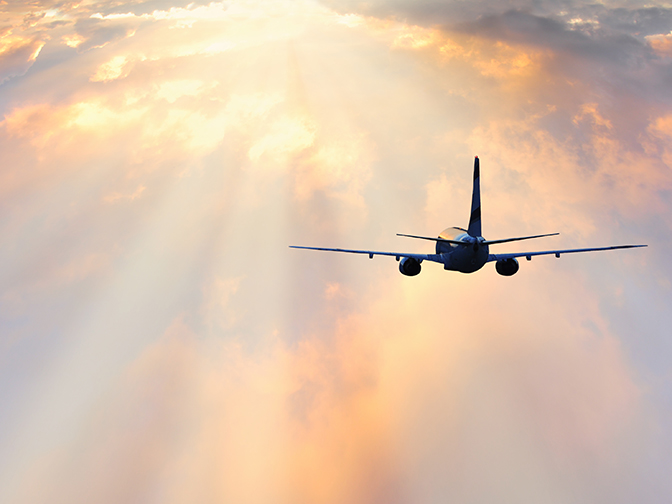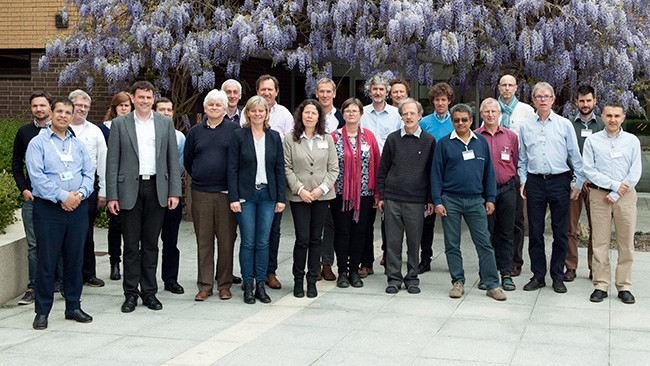

New aircraft wind data could be fed into numerical weather prediction (NWP) models to boost the quality of forecasts, according to a group of experts who met at ECMWF from 24 to 26 April.
Traditionally aircraft data used in weather prediction chiefly comes from the WMO’s Aircraft Meteorological Data Relay (AMDAR) programme.
The EUMETNET Observations Scientific Expert Team (Obs-SET) discussed the additional contribution that could be made by so-called ‘Mode-S’ aircraft data derived from air traffic control messages.
“There is a lot of interest in Mode-S data, which offers a low-cost way of obtaining vast numbers of extra wind measurements,” ECMWF scientist Bruce Ingleby said.
“However, Mode-S temperatures are less accurate and some AMDAR reports also provide humidity. Aircraft reports are very valuable for NWP.”
The Netherlands, the UK and Slovenia have taken the lead in producing and testing Mode-S data and others are now following suit.
EUMETNET is involved in coordinating such efforts and is planning studies to investigate whether AMDAR coverage could be reduced in Mode-S areas and increased elsewhere.
There are also ongoing discussions about prioritising aircraft descents over ascents for AMDAR reporting. For technical reasons the transmission of descent data is faster.
ECMWF results suggest that there are small differences in quality between ascent and descent data but that these are not sufficient to affect the decision.

The charts show the number of AMDAR and Mode-S wind observations per box on an average day. The Mode-S observations are greater in number by more than a factor of ten. While most of the observations are made at high altitudes, lower-altitude measurements are made during aircraft ascents and descents. (Figure: Ludwig-Maximilians-Universität München)
The 23 scientists from ten national meteorological services and ECMWF attending the Obs-SET meeting discussed the status and future plans for in situ (non-satellite) observations in Europe. These observations are essential for global and European regional numerical weather prediction.
In addition to aircraft data, issues discussed at the meeting included:
- the observation needs of nowcasting
- the quality of radiosonde descent data
- the usefulness of pressure reports from drifting buoys
- data collection for the WMO Year of Polar Prediction
- other observations: radiosonde reports from ships, remotely sensed profiles of wind, cloud and aerosol and integrated water vapour.
Nowcasting
Nowcasting aims to predict details of the weather in the next few hours. In nowcasting, the timeliness of observations is critical, and radar precipitation plus other radar variables are very important.
The EUMETNET OPERA programme produces composite radar data from national networks of almost all European countries and also works to improve the processing and quality control of radar scans.
For nowcasting the composite may not be ready in time but the processing improvements are still valuable.
Radiosondes
Several countries have started upgrading to the new Vaisala RS41 radiosondes. These offer the option to collect and transmit descent data after balloon burst, potentially doubling the number of radiosonde profiles.
Germany has just started distributing test descent data from two stations. ECMWF and other NWP centres will assess the quality of the data before operational use.
“The quality may be worse than ascent quality, but it is still likely to be very useful,” Bruce Ingleby said.

The meeting at ECMWF was attended by 23 scientists from across Europe. The Obs-SET experts provide advice on the observations programme coordinated by EUMETNET, a network of 31 weather services. Together these services manage some of the most vital observation assets for NWP in Europe.
Drifting buoys
ECMWF and Météo-France presented the results of two EUMETNET-funded studies looking into the utility of pressure reports from drifting buoys.
Per unit cost, drifter pressure data is more beneficial for NWP than any other measurement.
Both studies showed that the impact is largest in the main cyclogenesis areas, such as the western North Atlantic, and also in very data-sparse areas, such as the Arctic. There is also some benefit in the tropics, although it is smaller.
ECMWF data denial studies showed that, as expected, removing half the drifters has less than half the impact of removing all the drifters. However, the data density is much less than over many land areas and more drifter pressure observations would bring benefits.
Year of Polar Prediction
The meeting discussed how EUMETNET could facilitate additional data collection for the special observing periods in the Arctic planned as part of the WMO Year of Polar Prediction.
There are plans for additional radiosonde launches from stations north of 60°N, and from the Swedish Icebreaker Oden on its planned voyage to the Arctic in the summer of 2018.
Top photo: Serjio74/iStock/Thinkstock
